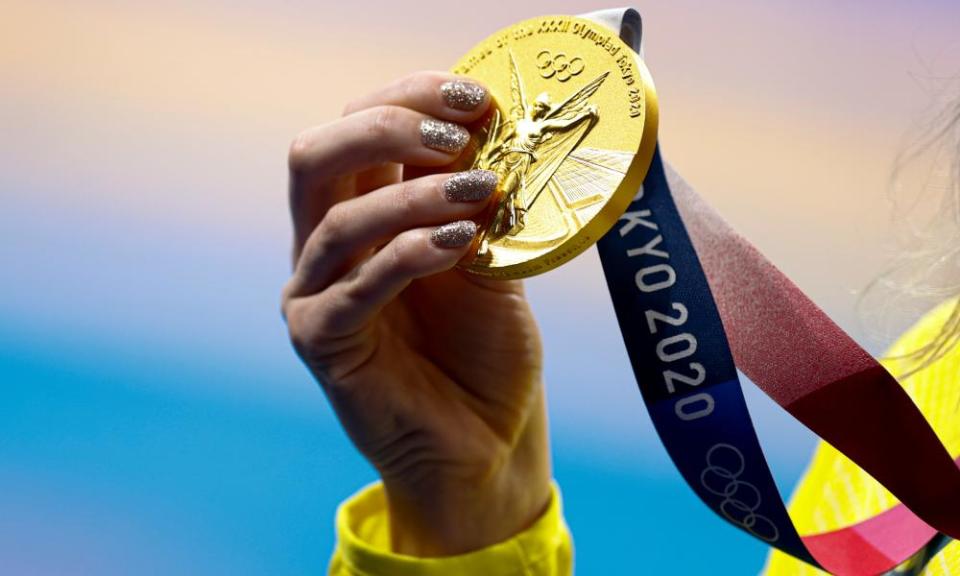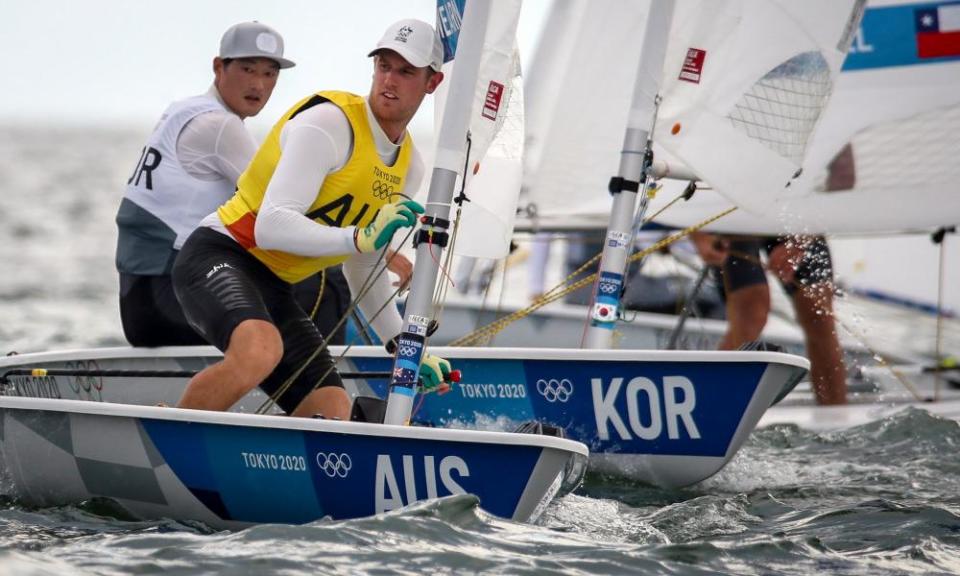Tokyo medal haul puts Australia’s Olympians on verge of golden era

Seventeen. That is the number of gold medals the Australian Olympic team won at the 2004 Games in Athens. It represents the most successful ever Olympics for Australia, one gold medal ahead of Sydney 2000 and four ahead of Melbourne 1956.
Of course, there are many ways to measure Olympic success. The Americans are fond of ordering their medal tally by total medals won, which sometimes boosts the United States above other nations. After the 2008 Games, when China won the most gold medals and the USA won the more medals overall, then-International Olympic Committee President Jacques Rogge took a diplomatic stance. “I believe each country will highlight what suits it best,” he said. “We take no position on that.” (Although the medal count on the IOC website ranks by gold).
Related: Kaylee McKeown leads Australian charge as Olympic swimmers win four more medals
For some Australian athletes, getting to the start-line is an immense achievement in itself. Others talk about the importance of personal bests on this global stage, whether or not a medal follows. For others still, nothing but gold will sate their Olympic appetite. Boosters of high performance sport also talk about the intangible benefits – national pride and entertainment, increased grass-roots participation – though such metrics defy easy quantification.
But on the usual measure, Tokyo 2020 has already been a historic Olympics for Australia. The national team has had its most successful first week at an Olympics: nine gold medals in seven days beating the previous record of eight, achieved in both Sydney and Athens. Saturday brought another gold – to Kaylee McKeown in the pool. Sunday promises at least one more – Matt Wearn has an unassailable lead in the men’s Laser class in the sailing – while the BMX freestyle and final day of swimming action also hold gold medal promise.
All of which means Tokyo 2020 is shaping up to be a particularly gold-tinged Games for Australia. London 2012 and Rio 2016 both brought relative disappointment – “just” eight gold medals in each (a tally the nation has already surpassed). With more gold medals on offer in track cycling, sailing, hockey, athletics and other disciplines in the week ahead, the Australian team are on track to equal – or even better – the pinnacle of Athens.

What explains this bumper medal haul? Dollars are partly the answer: medals cost money. The federal government spends about A$250m each year on high-performance sport. Across an ordinary four-year Games cycle, that is over a billion dollars spent on winning Olympic gold. In relative terms Australia spends more than most, but less than some of its larger rivals.
But the explanation for Australia’s Tokyo 2020 success is not more money. Olympic funding in Australia has been relatively stagnant for two decades – the Australian Institute of Sport (AIS) and Australian Olympic Committee (AOC) have had to fight for every last dollar that goes to the 30-odd national sporting organisations (NSOs), and, in turn, to elite sport.
“High performance funding has been relatively stuck,” AIS director Peter Conde told me two years ago. “There has not been a lot of mobility in terms of the funding distribution across sports regardless of performance or even potential. So the first objective was to unstick that.”
Conde has had partial success – there has been some additional ad hoc funding, particularly in the lead-up to Tokyo – but in macro terms the funding that propelled Australia to these Games is in the same ballpark as in London and Rio. He has, however, effectively reprioritised and restructured funding in certain areas.
Planning is one factor that has helped Australia’s medal charge. The AOC, and NSOs, has spent considerable time and money dotting every ‘i’ and crossing every ‘t’ ahead of the Games. A coffee cart in the Australian section of the athlete’s village might be a flippant example, but it is indicative of the micro-focus on every last detail from the AOC. In the search for marginal gains, small measures can have a big impact.
Covid has had an influence, both good and bad. The Australian Olympic team is overwhelmingly domestically based, which means many Australian athletes have seen their training schedule less impacted than international counterparts. Conversely, despite the pandemic, competition has continued in other regions, and the travel ban has prevented Australian athletes competing. Some see an upside even to this – on Saturday, an Australian track cyclist said that not having to travel frequently to international competition had actually helped Olympic preparations (the proof will be in the pudding; the Australian track team begin racing on Monday).
Ultimately, the difference between gold and silver, or first and last, can be a matter of seconds or centimetres. Just as the medal tally at less successful Games does not tell the full story, the bumper crop of medals at Tokyo is also attributable to individual hard work and bare luck. When the difference between a “good” and “bad” Olympics can be a handful of gold medals, each decided by the smallest of margins, we might be wary of reading too much into the Tokyo 2020 medal haul.
But if athletes and administrators are judged adversely when they just fall short, so too must credit flow when the results swing in Australia’s favour. By any measure, the Australian Olympic team is having an excellent Games.
When I spoke with Conde at the AIS, aptly enough in a meeting room entitled “Tokyo”, decorated with memorabilia from the 1964 Olympics, he was feeling confident about the 2020 Olympics. But he was also looking further afield.
“Our objective is about more sports winning more medals consistently,” he said. “It’s not about what medal we get at the very next event – but how do we build a system that is going to sustainably produce results?”
The results in Tokyo do not prove that Conde and his counterparts have answered that question. But the signs are promising. With the 2032 Games awarded to Brisbane – typically accompanied by a home Olympics medal bump – Australian sports fans can expect a new golden era for the nation’s Olympians.

 Yahoo Finance
Yahoo Finance 